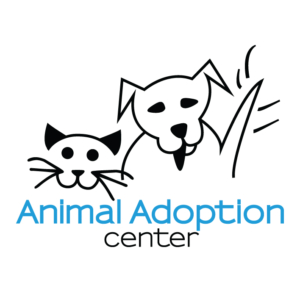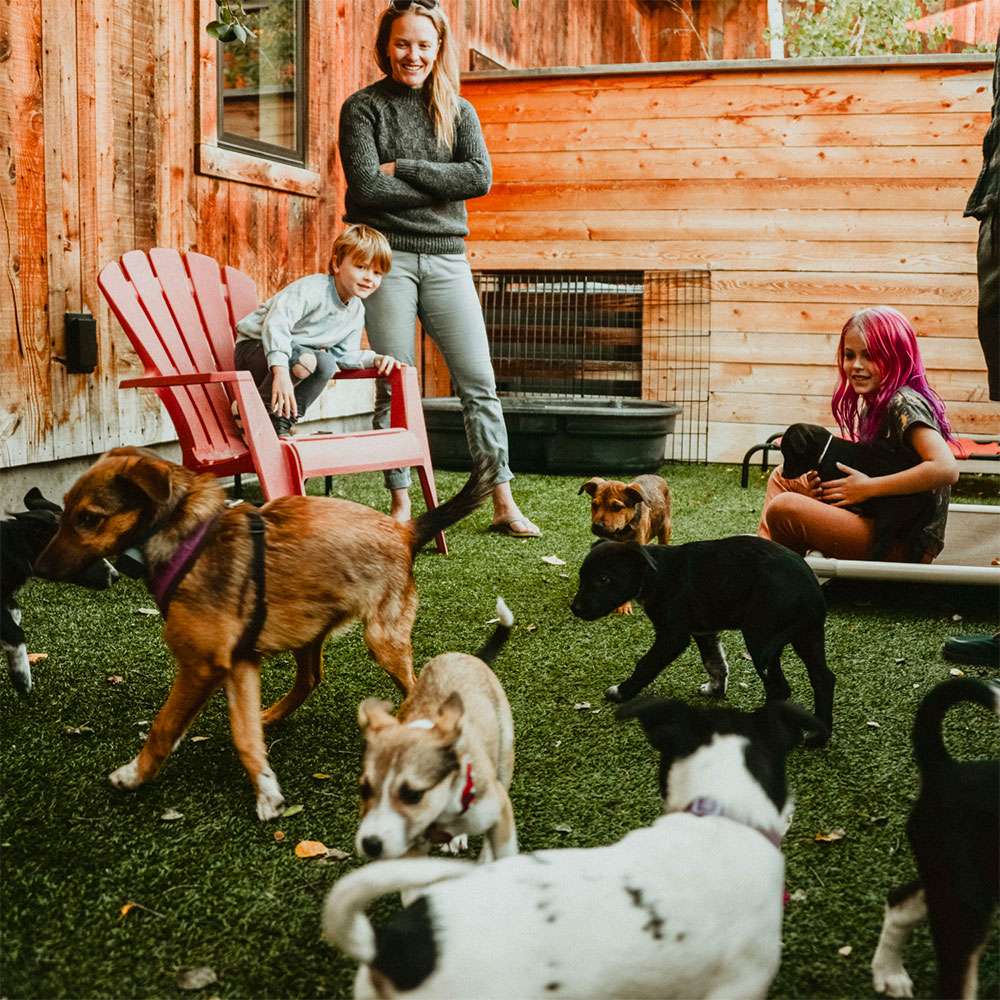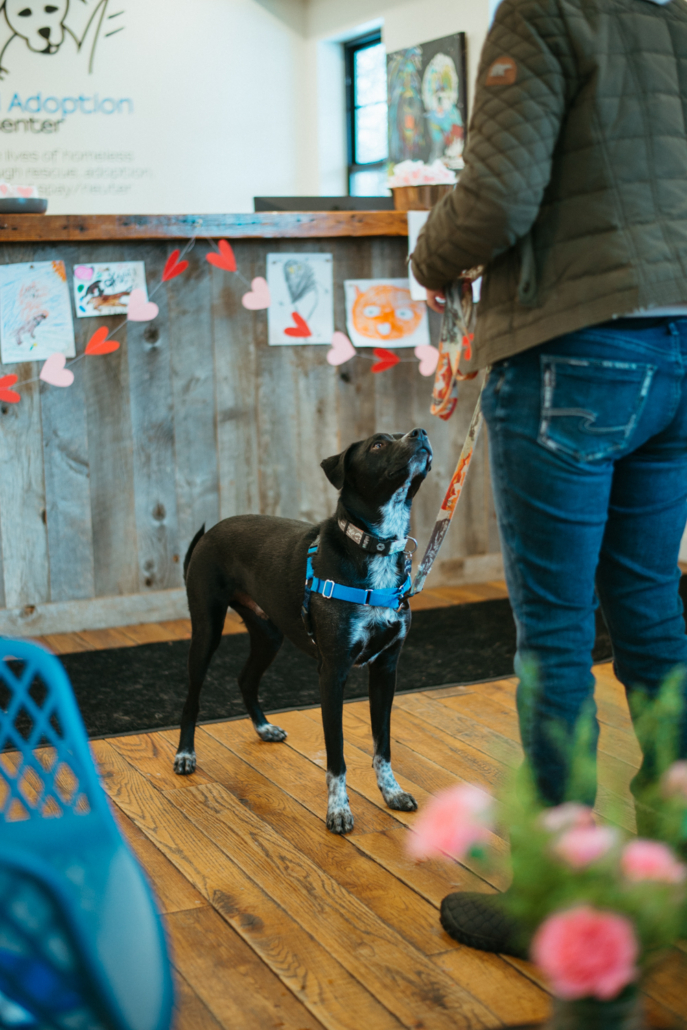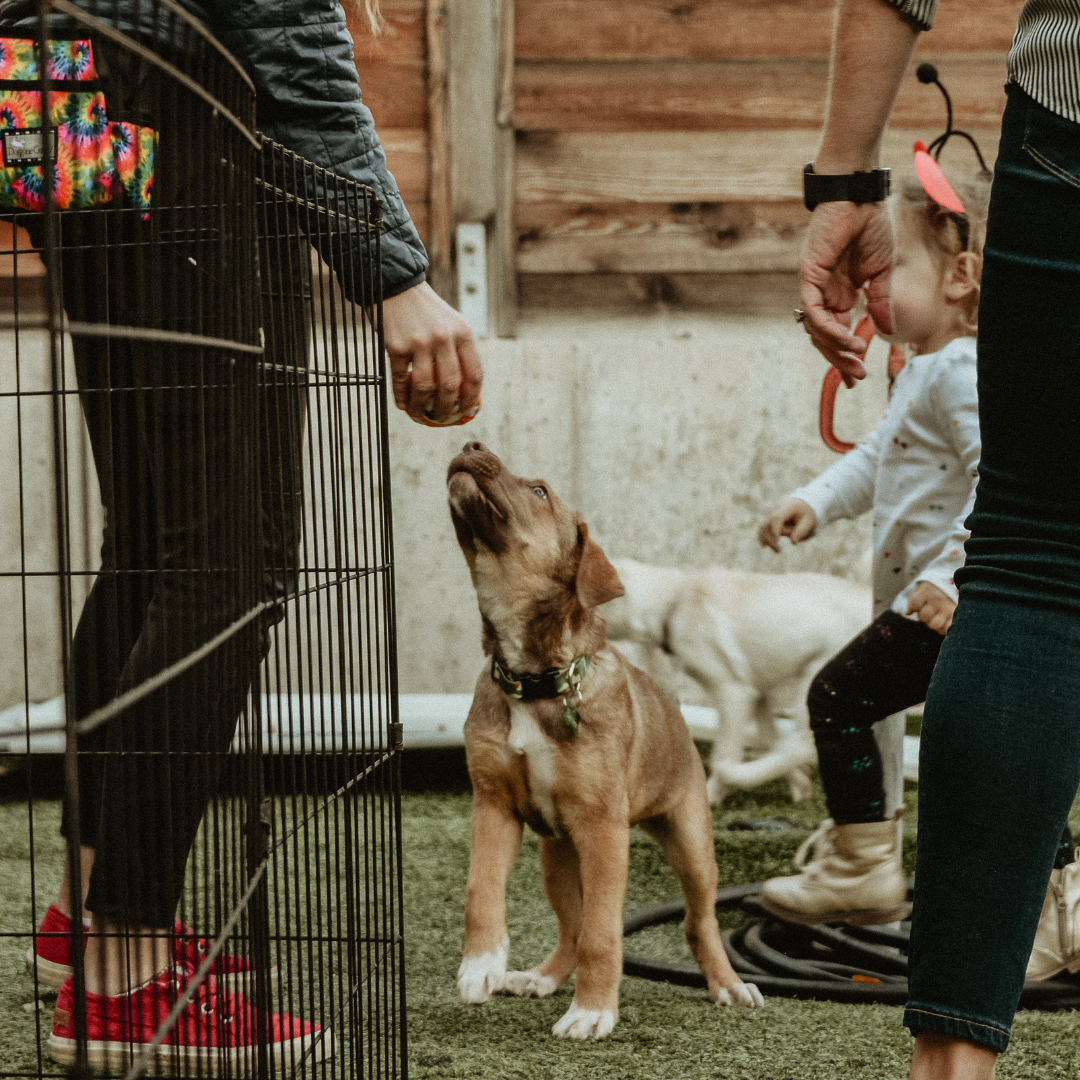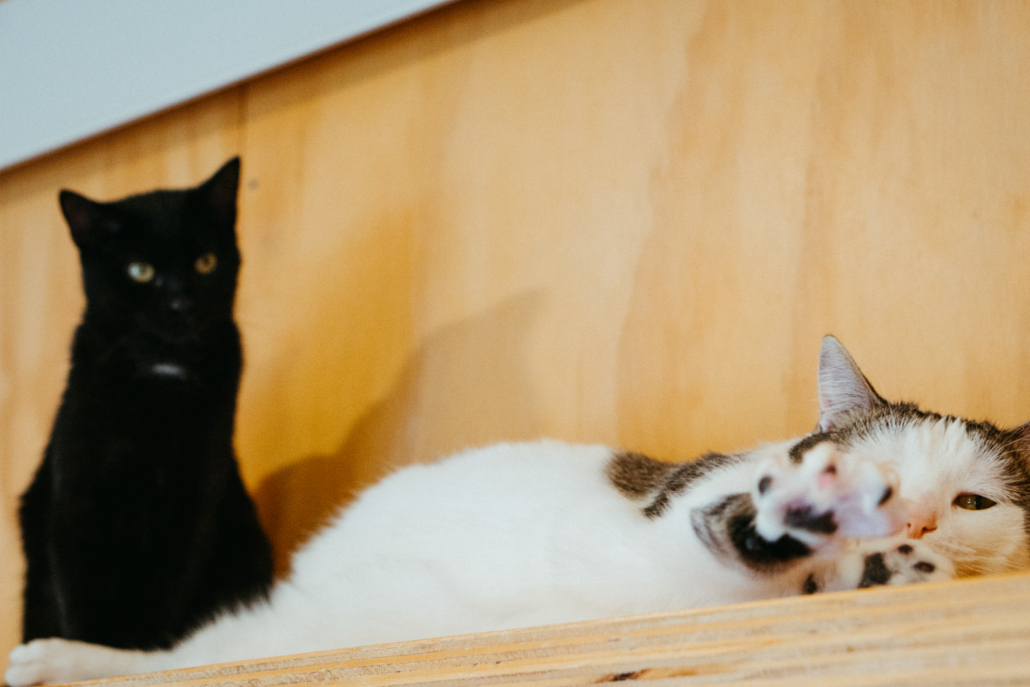PUPPY PRESCHOOL
TRAINING RESOURCES
CAT RESOURCES
POST-ADOPTION RESOURCES
The AAC strives to keep animals in their homes and out of the shelter system by providing training and support to their new families. Our Adoption Counselors are trained to answer your questions regarding pet ownership. Please call 307.739.1881 if you need support!
PUPPY PRESCHOOL
Puppies adopted from the AAC get access to weekly Puppy Preschool and a free training session to get you started on the right paw.
Every puppy adopted from the Animal Adoption Center is invited and encouraged to attend our free weekly Puppy Preschool! Puppy Preschool offers a chance for adopted puppies aged 8-16 weeks to socialize in a secure and supervised environment.
Puppies learn essential social skills from each other that they can’t acquire from adult dogs. These skills include bite inhibition and crucial play abilities. Our professional behavior team and AAC staff supervise Puppy Preschool, ensuring appropriate puppy interactions, educating adopters about their puppy’s play style, addressing puppy training queries, and offering weekly discussion topics to guide owners through various puppy stages. The behavior team can also identify specific behaviors that require attention and provide adopters with tailored behavior plans.
Beyond providing the puppies with a joyful experience, Puppy Preschool grants owners access to our knowledgeable behavior team. This dedicated team aims to educate and empower owners in nurturing happy and well-rounded puppies.
Please note that Puppy Preschool is exclusively available for puppies adopted from the AAC. The sessions currently take place on Wednesdays from 5-6pm in the AAC play yards.
“Although getting across town on Wednesday evenings in the summer wasn’t always easy, we are grateful for the puppy play dates provided through the Animal Adoption Center. While our pup, Hutch, wanted to be social with older, bigger dogs, not all of those dogs enjoyed his company and could be mean to him. At Puppy Play, Hutch got to play with dogs his age, including some of his littermates, and we got to connect with new pet owners and share some of puppy training experiences. At Puppy Play, I felt like Hutch was safe socializing with other dogs, we were given invaluable information and tips from Eva the trainer (which was very helpful)… and at the end, we had a happy, tired pup!”
“I’m a huge fan of Puppy Play and definitely encourage folks to attend consistently! We had to work with Neve to help teach her how to acceptably socialize with other dogs. The team at the Animal Adoption Center is so knowledgeable and they offered super valuable insights and suggestions for how to raise our pup. At first, Neve needed to learn how to interact with other dogs in general, and we were able to address resource-guarding right away, something I knew nothing about previously. When she got bigger, she learned how to play with smaller puppies. I felt very supported and set up for success by attending Puppy Play, and of course we were very proud of our girl when she graduated.”
TRAINING RESOURCES
The Animal Adoption Center (AAC) has collaborated with the professional behavior team at Aska’s Animals Foundation (AAF) to offer dedicated behavior resources and training to dogs who have been adopted from the AAC, as well as the adoptable dogs in our program.
The collaboration includes the facilitation of weekly Puppy Preschool sessions, pre- and post-adoption counseling, specialized attention to the AAC’s adoptable dogs, and behavior training and education for AAC foster families caring for dogs full time.
Adopters are encouraged to attend a free and convenient online behavior seminar that assists them in navigating the introduction of a new dog or puppy into their home. We are committed to providing adopters with the necessary support and knowledge to embark on their journey with a new canine companion confidently.
The partnership with Aska’s Animals Foundation enables ongoing outreach and support for puppies that were adopted after being nurtured in a Puppy Palace and tended to by the AAF team. This team possesses unique and in-depth knowledge of the puppies’ personalities and upbringing.
Through the provision of these comprehensive services, our goal is to ensure a seamless transition and successful integration of adopted dogs into their new homes.
If you have adopted a dog from the Animal Adoption Center and require behavior and training support, please complete the Adopted Dog Behavior Evaluation form by clicking the button below. We will promptly get in touch to connect you with the Behavior Team.
VIDEO RESOURCES
Bringing Home a New Dog and/or Puppy
The Behavior Team at Aska’s Animals go over realistic expectations, how to help with transition and setting up for success. Aska’s Animals is a 501c3 non-profit in Victor, ID committed to providing accessible canine behavior resources to our community and beyond.
If you are looking at using Animal Adoption Center x Aska’s Animals resources watching these videos is your first step to training! Whether you are a foster, adopter, volunteer, pet-sitter, etc. these are beneficial to everyone.
If you are currently providing foster care for an adoptable dog from AAC and have been asked to complete a behavior evaluation form, please refer to the section below!
If you’ve adopted a dog from the Animal Adoption Center and require behavior and training assistance, kindly complete the Adopted Dog Behavior Evaluation form by clicking the button below. We will then reach out to arrange your connection with the Behavior Team.
If you require assistance with your dog’s behavior and didn’t adopt from the AAC, kindly visit AAF to explore their dog behavior and training resources.
CAT RESOURCES
Take a deep breath and remember that cats take time to adjust to a new environment! We are happy to help further with issues you come across and feel free to call us at (307) 739-1881.
Litter Box Troubleshooting
Cats often will stop using their litter box as a way to communicate with us. While this can be very frustrating as an owner, it is time to start listening to what our pets are trying to tell us!
- Medical issues – Often times cats stop using the litter box when something is medically wrong. We recommend starting here when you notice this issue because a quick trip to the vet can be all you need to stop this from happening.
- The Actual Litter Box and Litter Type – Cats are allowed to be particular too and sometimes they decide they don’t like the litter being used or the type of box. At the Animal Adoption Center, we use World’s Best Multiple Cat litter. It can be purchased on Amazon, Chewy, or Target. You were sent home from the center with a bag of this litter to help with a transition to another litter, but occasionally some cats just love the litter we use so it is worth buying a bag and trying it out!
- More Litter Boxes – Our recommendation is one litter box per cat plus an additional one if you start to notice this issue. The placement of the boxes can also be part of the problem. Make sure your cat is able to access both litter boxes during the day and night and that it is located in an area they are willing to go!
- Litter attractant – Sometimes cats need a little extra help with their “target practice”. Litter attractant can be a helpful tool to for your cat to find the letterbox every time!
- Cleanliness of the Litter Box – We don’t like dirty bathrooms; cats are the same way! If you can, take a look at the fullness of the litter box at the time of the accidents. This could be why your cat is resorting to the clean carpet versus the overfilling litter box.
- Amount of Litter – Too much or too little litter could also be a factor. In most cases, there is too much litter and your cat could be reacting to this by using the surrounding area.
Scratching
Are you experiencing unwanted scratching on furniture or other surfaces in your home? We have some awesome techniques to help redirect your cat into using scratch-safe areas!
- Scratching Posts and Boards – If you take a walk into kitty city, you will see the plethora of scratching surfaces we have for the cats. You can go to any of the local pet stores, Target, or online to find tons of options that will blend into your home décor.
- Attractants – After adding new scratching safe things to your home, it’s time to show your cat that these areas have the greenlight. We have found great success with sprinkling catnip over the posts and boards. The catnip attracts the cats to that area and will be a treat for them when they use it!
Spraying
The main reasoning for this is stress and there are many ways for you to stop this unwanted behavior.
- Reducing Stressful Situations – When a cat enters a new environment, it can be very stressful transition. Make sure you create an area that your kitty knows is just for them. A bed, food, water, and hiding areas are important for your kitty to feel safe.
- Other Pets in the Household – Your cat may feel threatened by other animals in the house and it is comforting for them to spray to mark their territory. This may even be coming from an animal that was already in the house and the addition of a new pet is causing this behavior. Again, creating space in your home where all the animals can get away and feel safe is very important for reducing this stress.
Introducing a New Animal to Your Home
Everyone takes time to adjust to a new environment and the same goes for cats!
- Creating a Space – When you bring your new kitty home, make sure they have a space they know is for them! This way your cat knows they have a calm place to relax if they get over stimulated by the environment. A hiding area can be beneficial, an elevated surface, or a whole separate room.
-
A Soft Introduction – Introducing animals can be a very important first interaction. The same goes for humans! We all remember who was nice to us and we definitely remember the mean people in our lives. Cats are sensitive so make sure you take the time to slowly introduce your new pet to other animals and even smaller children. Put in the work early so your future self can thank you! Here is an excellent article that further depicts the type of introduction we are talking about!
3-3-3 RULE
